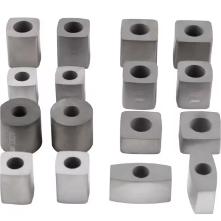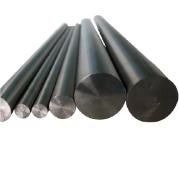**Metal Makeover Magic: Transforming Surfaces Through Plating**
(How To Plate Metal Surface)
Ever wonder how that shiny faucet resists rust year after year? Or how a simple ring gets its dazzling gold finish? The secret often lies in **metal plating**. It’s like giving metal a superpower suit, adding strength, beauty, and resilience. Forget the dry technical manuals; let’s dive into the fascinating world of transforming ordinary metal surfaces into something extraordinary.
**Main Product Keyword:** Metal Plating
**1. What Exactly is Metal Plating?**
Metal plating is a process. We add a thin layer of metal onto the surface of another object. Think of it like painting, but with metal. The object getting coated is called the substrate. The metal we add is the plating metal. Common plating metals include chrome, nickel, zinc, gold, silver, and copper.
The goal isn’t just decoration. This layer changes the substrate’s properties. It might make it harder, shinier, less likely to rust, better at conducting electricity, or easier to solder. The substrate can be metal itself, like steel or brass. Sometimes, it’s even plastic or other materials made conductive first.
Picture this: A dull steel bolt. It goes into a plating bath. It comes out coated in bright zinc. This zinc layer shields the steel from rust, making the bolt last much longer. That’s plating in action – a protective shield applied molecule by molecule.
**2. Why Bother Plating Metal Surfaces?**
Plating isn’t just for looks. It solves real problems and adds significant value. Here’s why it’s so widely used:
* **Fight Against Rust:** This is a huge reason. Metals like iron and steel rust easily. Plating them with zinc (galvanizing) or cadmium creates a barrier. This barrier stops oxygen and water from reaching the base metal. Rust is blocked. Your car’s underbody parts, fence posts, and hardware often rely on this.
* **Wear and Tear Resistance:** Some metals are soft. Plating them with a harder metal, like chromium or nickel, makes the surface much tougher. This layer resists scratches, abrasion, and general wear. Think of hydraulic rods or industrial machinery parts. Their chrome plating helps them survive harsh conditions.
* **Beautiful Finishes:** Shiny chrome bumpers, elegant gold jewelry, sleek silverware – plating delivers stunning visual appeal. It provides a consistent, reflective, and often decorative finish that’s hard to achieve otherwise. Aesthetics drive plating in consumer goods, automotive trim, and décor.
* **Better Electrical Flow:** Copper and gold are excellent electrical conductors. Plating electrical connectors, circuit board traces, or contacts with these metals ensures reliable current flow. Gold plating is especially good. It doesn’t tarnish, keeping connections clean and efficient.
* **Building Up Worn Parts:** Electroplating can deposit metal thickly. We can use this to rebuild parts worn down by friction. Think of engine crankshafts or bearing surfaces. Plating adds material back precisely where it’s needed, saving costly replacements.
* **Solderability:** Some metals are hard to solder. Plating them with tin or a tin-lead alloy makes soldering connections easy and reliable. This is vital in electronics manufacturing.
**3. How Do We Actually Plate a Metal Surface?**
The magic happens through chemistry and electricity. The most common method is electroplating. Here’s a simplified look at the steps:
* **Step 1: Clean it Thoroughly:** This is critical. Any dirt, oil, grease, or rust prevents the plating from sticking properly. The surface must be absolutely clean. We use degreasers, acid baths, abrasives, and ultrasonic cleaners. Think surgical-level cleanliness.
* **Step 2: Get it Ready (Sometimes):** Depending on the base metal and the plating metal, extra steps might be needed. For plating onto steel with copper, nickel, or chrome, we often plate a thin layer of copper or nickel first. This improves adhesion and coverage. Aluminum usually needs a special zincating treatment before plating.
* **Step 3: The Plating Bath:** The object (now the cathode) is submerged in a special liquid solution. This solution contains dissolved ions of the plating metal (like nickel ions or gold ions). A piece of the plating metal itself acts as the anode. We pass an electric current through the bath.
* **Step 4: Electricity Does the Work:** The electric current causes a chemical reaction. Metal ions in the solution are attracted to the negatively charged object (cathode). They gain electrons and turn back into solid metal atoms. These atoms deposit onto the object’s surface, building the plating layer. The anode metal dissolves to replenish the ions in the solution.
* **Step 5: Rinse and Dry:** After plating, the object is rinsed thoroughly in clean water. This removes any leftover plating solution. Then it’s dried carefully to prevent water spots or stains.
* **Step 6: Finishing Touches (Optional):** Sometimes we add a clear protective coating (lacquer) over the plating. This enhances durability or appearance, especially for decorative finishes like gold or brass plating. Buffing might also happen for extra shine.
Other methods exist, like electroless plating (uses chemicals, not electricity) or immersion plating, but electroplating is the workhorse.
**4. Where Do We See Metal Plating Applications?**
Metal plating is everywhere! Look around:
* **Automotive World:** Chrome bumpers, grilles, and trim. Zinc-plated nuts, bolts, and brake components for corrosion resistance. Engine parts with wear-resistant coatings.
* **Electronics & Gadgets:** Gold plating on connectors, memory card contacts, and circuit board traces for reliable conductivity. Tin plating on components for solderability. Nickel plating for EMI/RFI shielding inside devices.
* **Hardware & Tools:** Zinc-plated (galvanized) screws, nails, hinges, and fencing resist rust. Chrome-plated hand tools look good and resist wear.
* **Plumbing Fixtures:** Faucets, showerheads, and fittings often have chrome or nickel plating. This provides a durable, easy-to-clean, and attractive finish.
* **Jewelry & Fashion:** Gold, silver, rhodium, and platinum plating create beautiful, affordable jewelry. Buckles, zippers, and eyeglass frames get plated finishes.
* **Aerospace & Defense:** Critical components need extreme corrosion resistance and wear protection. Cadmium plating (less common now), zinc-nickel alloys, and specialized coatings are used.
* **Industrial Machinery:** Hydraulic cylinders get hard chrome plating. Gears, bearings, and valves receive various platings to extend service life.
* **Household Items:** Silverware (often nickel-silver plated), decorative items, lamp bases, and even some cookware utilize plating.
**5. Metal Plating FAQs: Quick Answers**
* **Is plating expensive?** Cost varies a lot. It depends on the plating metal (gold is expensive, zinc is cheap), the part size, the thickness needed, and the required prep work. Simple zinc plating is very economical. Decorative chrome or thick gold plating costs more.
* **How long does plating last?** Durability depends on the plating type, thickness, the environment (saltwater is harsh), and wear. A thick, high-quality chrome plate on a car bumper lasts years. Thin gold plating on a ring might wear off with daily use over time.
* **Can I plate metal at home?** Small-scale DIY kits exist, mainly for copper, nickel, or chrome plating small objects. Results are often inconsistent. Safety is a major concern. Plating involves electricity and potentially hazardous chemicals. Proper ventilation, protective gear, and chemical disposal are essential. Professional plating is recommended for reliable results and safety.
* **Is plating safe?** Professional plating shops follow strict environmental and safety regulations. Many traditional plating chemicals (like hexavalent chromium) are toxic and heavily regulated. Safer alternatives (like trivalent chromium) are increasingly used. DIY plating without proper precautions is risky.
* **What’s the difference between plating and anodizing?** Plating adds a new metal layer *onto* the surface. Anodizing (used mainly on aluminum) thickens the natural oxide layer *of* the metal itself through an electrochemical process. Both protect and decorate, but they work differently.
* **Can you plate plastic?** Yes! It’s very common. Think of shiny car emblems or chrome-plated plastic trim. The plastic part first gets etched and coated with a conductive layer (often copper or nickel). Then it can be electroplated like metal. This is called electroplating on plastics (ELP).
(How To Plate Metal Surface)
* **How thick is the plating layer?** Thickness varies by application. Decorative chrome might be only 0.00001 inches thick. Hard chrome for wear resistance could be 0.001 to 0.010 inches or more. Gold plating on electronics is extremely thin.
Inquiry us
if you want to want to know more, please feel free to contact us.


